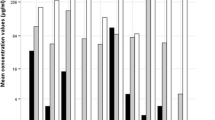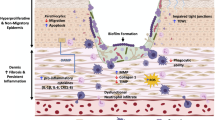Abstract
Diabetes mellitus is a major chronic disease that continues to increase significantly. One of the most important and costly complications of diabetes is foot ulceration that may be colonized by pathogenic and antimicrobial resistant bacteria, which may express several virulence factors that could impair treatment success. These bacterial communities can be organized in polymicrobial biofilms, which may be responsible for diabetic foot ulcer (DFU) chronicity. We evaluated the influence of polymicrobial communities in the ability of DFU isolates to produce biofilm, using a microtiter plate assay and a multiplex fluorescent in situ hybridization, at three time points (24, 48, 72 h), after evaluating biofilm formation by 95 DFU isolates belonging to several bacterial genera (Staphylococcus, Corynebacterium, Enterococcus, Pseudomonas and Acinetobacter). All isolates were biofilm-positive at 24 h, and the amount of biofilm produced increased with incubation time. Pseudomonas presented the higher biofilm production, followed by Corynebacterium, Acinetobacter, Staphylococcus and Enterococcus. Significant differences were found in biofilm formation between the three time points. Polymicrobial communities produced higher biofilm values than individual species. Pseudomonas + Enterococcus, Acinetobacter + Staphylococcus and Corynebacterium + Staphylococcus produced higher biofilm than the ones formed by E. faecalis + Staphylococcus and E. faecalis + Corynebacterium. Synergy between bacteria present in dual or multispecies biofilms has been described, and this work represents the first report on time course of biofilm formation by polymicrobial communities from DFUs including several species. The biological behavior of different bacterial species in polymicrobial biofilms has important clinical implications for the successful treatment of these infections.




Similar content being viewed by others
References
Bessman AN, Geiger PJ, Canawati H (1992) Prevalence of Corynebacteria in diabetic foot infections. Diabetes Care 15:1531–1533
Bowling FL, Jude EB, Boulton AJ (2009) MRSA and diabetic foot wounds: contaminating or infection organisms? Curr Diabetes Rep 9:440–444
Brogden KA, Guthmiller JM, Taylor CE (2005) Human polymicrobial infections. Lancet 365:253–255
Burmølle M, Webb JS, Rao D, Hansen LH, Sørensen SJ, Kjelleberg S (2006) Enhanced biofilm formation and increased resistance to antimicrobial agents and bacterial invasion are caused by synergistic interactions in multispecies biofilms. Appl Environ Microbiol 72:3916–3923
Donlan RM, Costerton JW (2002) Biofilms: survival mechanisms of clinically relevant microorganisms. Clin Microbiol Rev 15:167–193
Dowd SE, Wolcott RD, Sun Y, McKeehan T, Smith E, Rhoads D (2008) Polymicrobial nature of chronic diabetic foot ulcer biofilm infections determined using bacterial tag encoded FLX amplicon pyrosequencing (bTEFAP). PLoS One 3:e3326. doi:10.1371/journal.pone.0003326
Espinal P, Martí S, Vila J (2012) Effect of biofilm formation on the survival of Acinetobacter baumannii on dry surfaces. J Hosp Infect 80:56–60
Ibrahim NH, Somily AM, Bassyouni RH, Zain El-Aabedien A (2012) Comparative study assessing the effect of tigecycline and moxifloxacin in prevention of Acinetobacter baumannii biofilm. Life Sci J 9:1016–1024
James JA, Swogger E, Wolcott R, Pulcini ED, Secor P, Sestrich J, Costerton JW, Stewart PS (2008) Biofilms in chronic wounds. Wound Repair Regen 16:37–44
Malik A, Mohammad Z, Ahmad J (2013) The diabetic foot infections: biofilms and antimicrobial resistance. Diabetes Metab Sindr 7:101–107
Mendes JJ, Marques-Costa A, Vilela C, Neves J, Candeias N, Cavaco-Silva P, Melo-Cristino J (2012) Clinical and bacteriological survey of diabetic foot infections in Lisbon. Diabetes Res Clin Pract 95:153–161
Mohamed JA, Huang DB (2007) Biofilm formation by enterococci. J Med Microbiol 56:1581–1588
Oliveira M, Nunes SF, Carneiro C, Bexiga R, Bernardo F, Vilela CL (2007) Time course of biofilm formation by Staphylococcus aureus and Staphylococcus epidermidis mastitis isolates. Vet Microbiol 124:187–219
Otto M (2008) Staphylococcal Biofilms. Curr Top Microbiol Immunol 322:207–228
Pettit RK, Weber CA, Kean MJ, Hoffmann H, Pettit GR, Tan R, Franks KS, Horton ML (2005) Microplate Alamar blue assay for Staphylococcus epidermidis biofilm susceptibility testing. Antimicrob Agents Chemoter 49:2612–2617
Richard JL, Lavigne JP, Sotto A (2012) Diabetes and foot infection: more than double trouble. Diabetes Metab Res Rev 28:46–53
Sivanmaliappan TS, Sevanan M (2011) Antimicrobial susceptibility patterns of Pseudomonas aeruginosa from diabetes patients with foot ulcers. Int J Microbiol 2011:605195
Stepanović S, Cirković I, Ranin L, Svabić-Vlahović M (2004) Biofilm formation by Salmonella spp. and Listeria monocytogenes on plastic surface. Lett Appl Microbiol 38:428–432
Swarna SR, Madhavan R, Gomathi S, Devaraj, Thamaraiselvi S (2012) A study of Biofilm on Diabetic Foot Ulcer. Int J Res Pharm Biomed Sci 3:1809–1814
Thornton RB, Rigby PJ, Wiertsema SP, Filion P, Langlands J, Coates HL, Vijayasekaran S, Keil AD, Richmond PC (2011) Multi-species bacterial biofilm and intracellular infection in otitis media. BMC Pediatr 11:94
World Health Organization Geneva (2011) Global status report on noncommunicable diseases 2010. WHO Library. 164 pp. ISBN 978 92 4 068645 8
Xu L, McLennan SV, Lo L, Natfaji A, Bolton T, Liu Y, Twigg SM, Yue DK (2007) Bacterial load predicts healing rate in neuropathic diabetic foot ulcers. Diabetes Care 30:378–380
Yang L, Liu Y, Wu H, Hóiby N, Molin S, Song ZJ (2011) Current understanding of multi-species biofilms. Int J Oral Sci 3:74–81
Acknowledgments
This study was conducted with the financial support of the Foundation for Science and Technology (FCT Project PTDC/SAU-MIC/122816/2010-Biofilms in diabetic foot: microbial virulence characterization and cross-talk of major isolates). Carla Mottola holds a PhD fellowship (SFRH/BD/72872/2010) from FCT, Portugal.
Compliance with ethical standards
Not applicable.
Author information
Authors and Affiliations
Corresponding author
Rights and permissions
About this article
Cite this article
Mottola, C., Mendes, J.J., Cristino, J.M. et al. Polymicrobial biofilms by diabetic foot clinical isolates. Folia Microbiol 61, 35–43 (2016). https://doi.org/10.1007/s12223-015-0401-3
Received:
Accepted:
Published:
Issue Date:
DOI: https://doi.org/10.1007/s12223-015-0401-3




